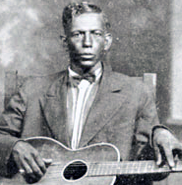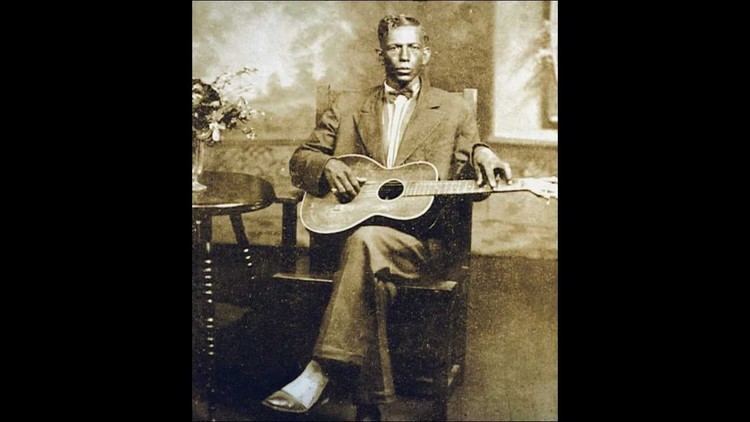Role Musician Name Charley Patton | Labels ParamountVocalion Years active 1916–1934 Siblings Sam Chatmon | |
 | ||
Also known as The Masked MarvelElder J. J. Hadley Genres Delta bluesCountry bluesGospel blues Associated acts Son HouseWillie BrownThe Mississippi SheiksHenry "Son" Sims Albums Screamin' and Hollerin' t, King of the Delta Blues, Complete Recordings 1929‑1934, The Definitive Charley P, The Best of Charlie Patton | ||
Charley patton spoonful blues delta blues 1929
Charley Patton (died April 28, 1934), also known as Charlie Patton, was an American Delta blues musician. Considered by many to be the "Father of the Delta Blues", he created an enduring body of American music and inspired most Delta blues musicians. The musicologist Robert Palmer considered him one of the most important American musicians of the twentieth century.
Contents
- Charley patton spoonful blues delta blues 1929
- Charley Patton The Blues Masterpieces Classic Country Blues Music
- Biography
- Recognitions
- Historical marker
- Tributes
- Paramount Recordings
- Vocalion Recordings
- References

Patton (who was well educated by the standards of his time) spelled his name Charlie, but many sources, including record labels and his gravestone, use the spelling Charley.

Charley Patton - The Blues Masterpieces (Classic Country Blues Music)
Biography

Patton was born in Hinds County, Mississippi, near the town of Edwards, and lived most of his life in Sunflower County, in the Mississippi Delta. Most sources say he was born in April 1891, but the years 1881, 1885 and 1887 have also been suggested. Patton's parentage and race also are uncertain. His parents were Bill and Annie Patton, but locally he was regarded as having been fathered by former slave Henderson Chatmon, several of whose children became popular Delta musicians, as solo performers and as members of groups such as the Mississippi Sheiks. Biographer John Fahey described Patton as having "light skin and Caucasian features." Patton was considered African-American, but because of his light complexion there has been speculation that he was Mexican or Cherokee (a theory endorsed by Howlin' Wolf). It is now generally agreed that Patton was of mixed heritage, with both white and black ancestors, as well as a Cherokee grandmother. In "Down the Dirt Road Blues", Patton sang of having gone to "the Nation" and "the Territo'", referring to the Cherokee Nation's portion of the Indian Territory (which became part of the state of Oklahoma in 1907), where a number of Black Indians tried unsuccessfully to claim a place on the tribal rolls and thereby obtain land.

In 1897, his family moved 100 miles (160 km) north to the 10,000-acre (40 km2) Dockery Plantation, a cotton farm and sawmill near Ruleville, Mississippi. There, Patton developed his musical style, influenced by Henry Sloan, who had a new, unusual style of playing music, which is now considered an early form of the blues. Patton performed at Dockery and nearby plantations and began an association with Willie Brown. Tommy Johnson, Fiddlin' Joe Martin, Robert Johnson, and Chester Burnett (who went on to gain fame in Chicago as Howlin' Wolf) also lived and performed in the area, and Patton served as a mentor to these younger performers. Robert Palmer described Patton as a "jack-of all-trades bluesman", who played "deep blues, white hillbilly songs, nineteenth-century ballads, and other varieties of black and white country dance music with equal facility". He was popular across the southern United States and performed annually in Chicago; in 1934, he performed in New York City. Unlike most blues musicians of his time, who were often itinerant performers, Patton played scheduled engagements at plantations and taverns. He gained popularity for his showmanship, sometimes playing with the guitar down on his knees, behind his head, or behind his back. Patton was a small man, about 5 feet 5 inches tall, but his gravelly voice was reputed to have been loud enough to carry 500 yards without amplification; a singing style which particularly influenced Howlin' Wolf.

Patton settled in Holly Ridge, Mississippi, with his common-law wife and recording partner, Bertha Lee, in 1933. He died on the Heathman-Dedham plantation, near Indianola, on April 28, 1934, and is buried in Holly Ridge (both towns are located in Sunflower County). His death certificate states that he died of a mitral valve disorder. The death certificate does not mention Bertha Lee; the only informant listed is one Willie Calvin. Patton's death was not reported in the newspapers.
A memorial headstone was erected on Patton's grave (the location of which was identified by the cemetery caretaker, C. Howard, who claimed to have been present at the burial), paid for by musician John Fogerty through the Mt. Zion Memorial Fund in July 1990. The spelling of Patton's name was dictated by Jim O'Neal, who also composed the epitaph.
Recognitions
Screamin' and Hollerin' the Blues: The Worlds of Charley Patton, a boxed set collecting Patton's recorded works, was released in 2001. It also features recordings by many of his friends and associates. The set won three Grammy Awards in 2003, for Best Historical Album, Best Boxed or Special Limited Edition Package, and Best Album Notes. Another collection of Patton recordings, The Definitive Charley Patton, was released by Catfish Records in 2001.
Patton's song "Pony Blues" (1929) was included by the National Recording Preservation Board in the National Recording Registry of the Library of Congress in 2006. The board annually selects recordings that are "culturally, historically, or aesthetically significant."
In 2013, Jack White's Third Man Records teamed up with Document Records to reissue The Complete Recorded Works in Chronological Order of Charley Patton, Blind Willie McTell and the Mississippi Sheiks.
Historical marker
The Mississippi Blues Trail placed its first historical marker on Patton's grave in Holly Ridge, Mississippi, in recognition of his legendary status as a bluesman and his importance in the development of the blues in Mississippi. It placed another historic marker at the site where the Peavine Railroad intersects Highway 446 in Boyle, Mississippi, designating it as a second site related to Patton on the Mississippi Blues Trail. The marker commemorates the lyrics of Patton's "Peavine Blues", which refer to the branch of the Yazoo and Mississippi Valley Railroad which ran south from Dockery Plantation to Boyle. The marker notes that riding on the railroad was a common theme of blues songs and was seen as a metaphor for travel and escape.
Tributes
Paramount Recordings
†Willie Brown on accompanying guitar
Vocalion Recordings
Vocal duet with Bertha Lee
